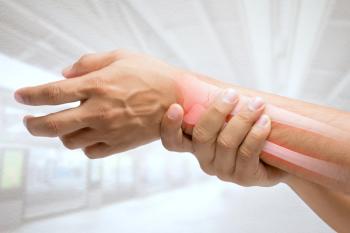
Vitamin D and likelihood of falls in older African-American women
The findings from a recent study indicate that physicians who prescribe vitamin D to prevent falls in older women may want to reconsider the practice.
A prospective
The authors from
The trial, known as the Physical Performance, Osteoporosis and Vitamin D in African American Women (PODA), had two primary outcomes: prevention of bone loss and decline in physical performance. The study population was healthy black women older than 60 years (mean age 68.2 years), with serum 25(OH)D between 8 and 26 ng/mL.
Participants filled out a falls questionnaire every 3 months over a 3-year period. A total of 260 women entered the study and 184 completed the 3 years.
At baseline, 25(OH)D was 22 ng/mL and 14.2% of participants recalled falling over the previous year: 15.4% in the active treatment group and 13.1% in the placebo group. Subjects were given a single capsule of vitamin D3 or a matching placebo to take daily.
During the study period, mean serum 25(OH)D reached 47 ng/mL in the active vitamin group (n = 95), for which vitamin D3 was adjusted to maintain serum 25(OH)D above 30 ng/mL, compared to 21 ng/mL in the placebo group (n = 89).
Among the women who completed the study, 46% in the treatment group reported falling compared to 47% in the placebo group. A recent history of falling was strongly linked to falling in the interval within the 3-month visit interval. However, “There were no statistically significant associations between vitamin D treatment group, vitamin D dose of serum 25(OH)D, and the risk of falling during follow-up,” the authors wrote.
Assessing the tertiles of serum 25(OH)D and vitamin D dose also failed to demonstrate an impact on fall risk. In addition, there was also no connection between serum 1, 25(OH)2D or parathyroid hormone (PTH) and subsequent risk of falling.
“At what level below 20 ng/mL there is an increase in falls cannot be determined from the study because individuals with very low levels of 25(OH)D were excluded,” the authors wrote.
Last year the United States Preventive Services Task Force (
The study authors found that use of multiple medications may be linked to falling, which is consistent with findings in white populations.
Based on the study’s results, the authors believe that the
Some recent studies have observed an increase in the number of falls and fractures with high intakes of vitamin D. The USPSTF also concluded that calcium with vitamin D increases risk of kidney stones.
Newsletter
Get the latest clinical updates, case studies, and expert commentary in obstetric and gynecologic care. Sign up now to stay informed.



